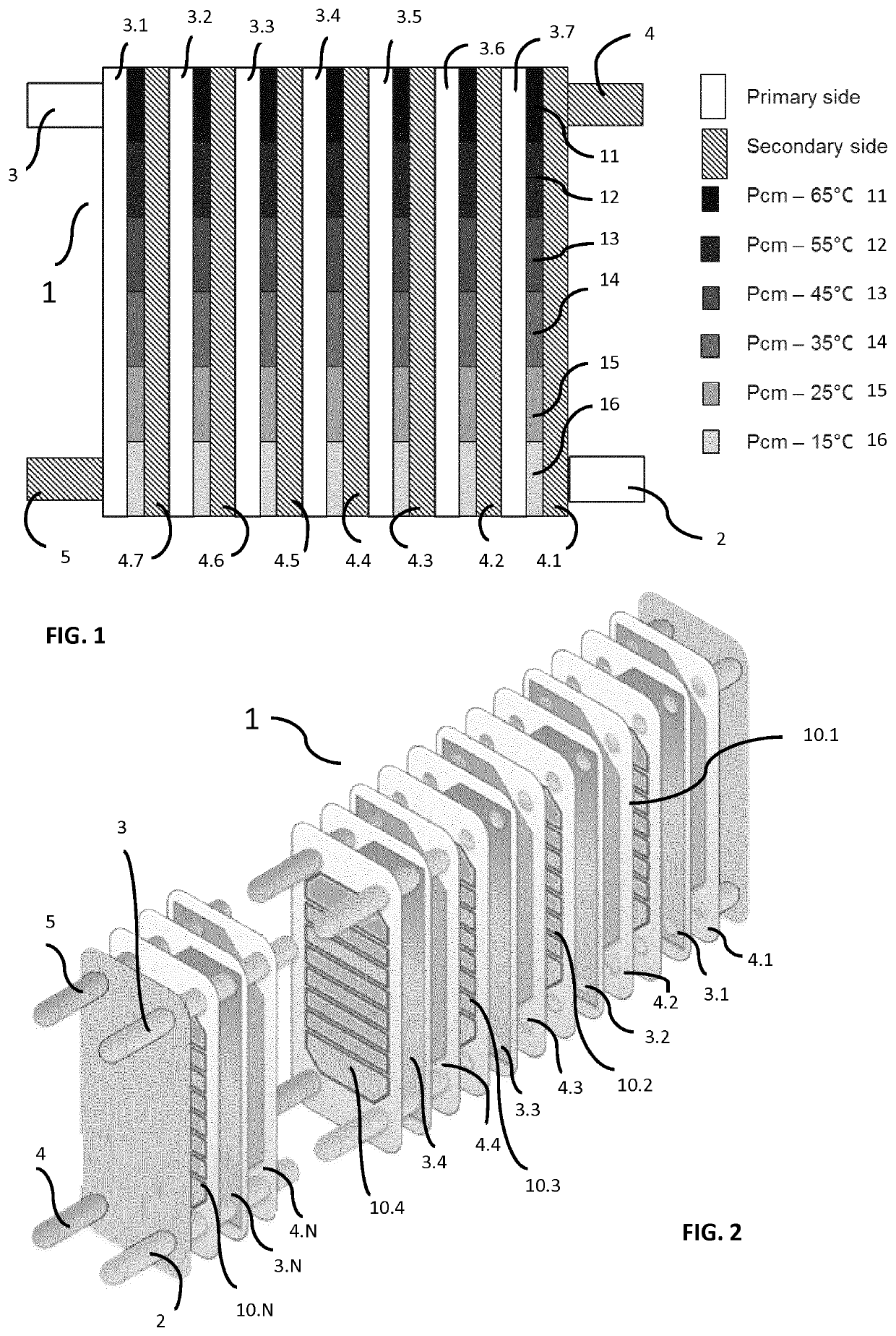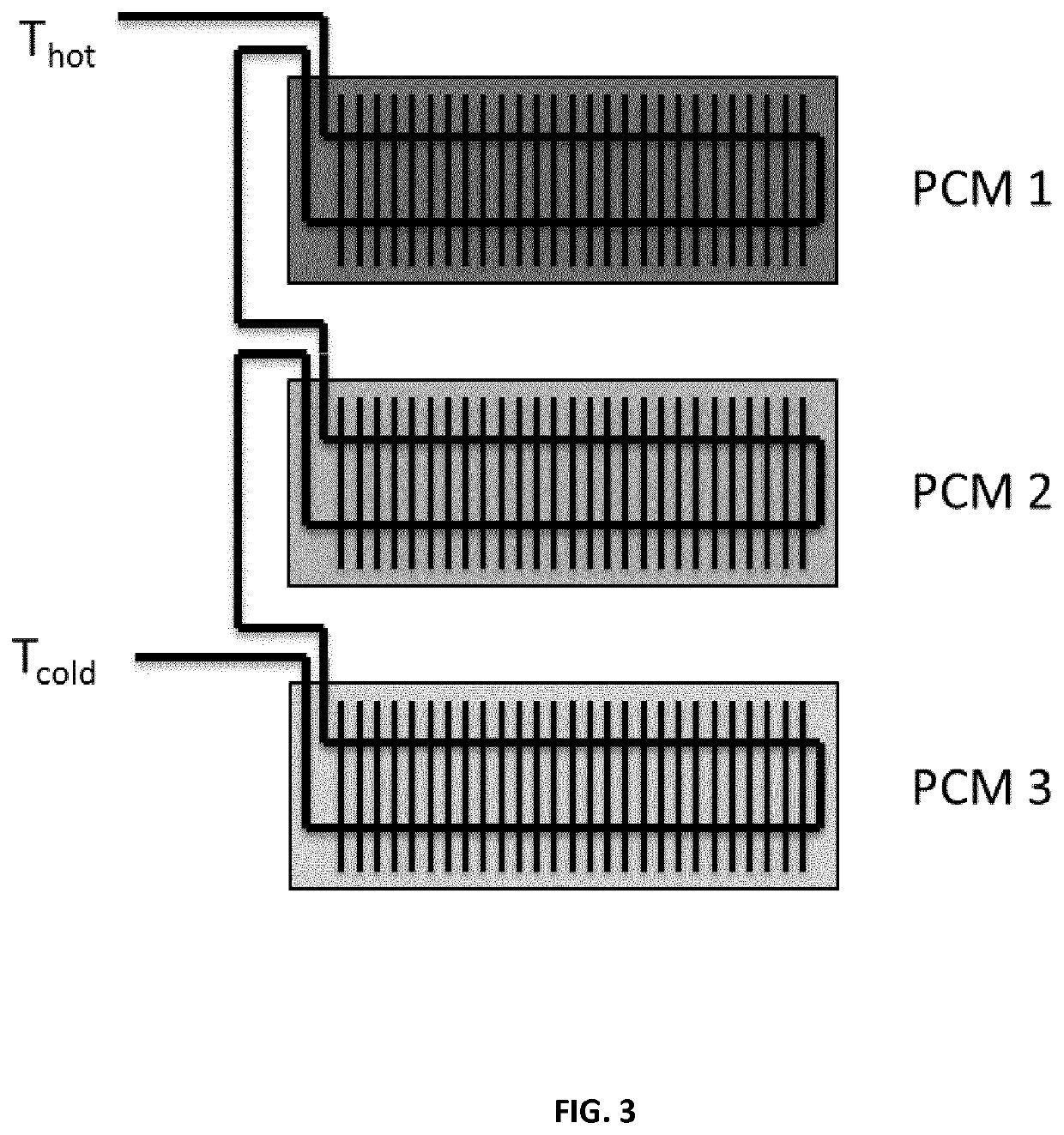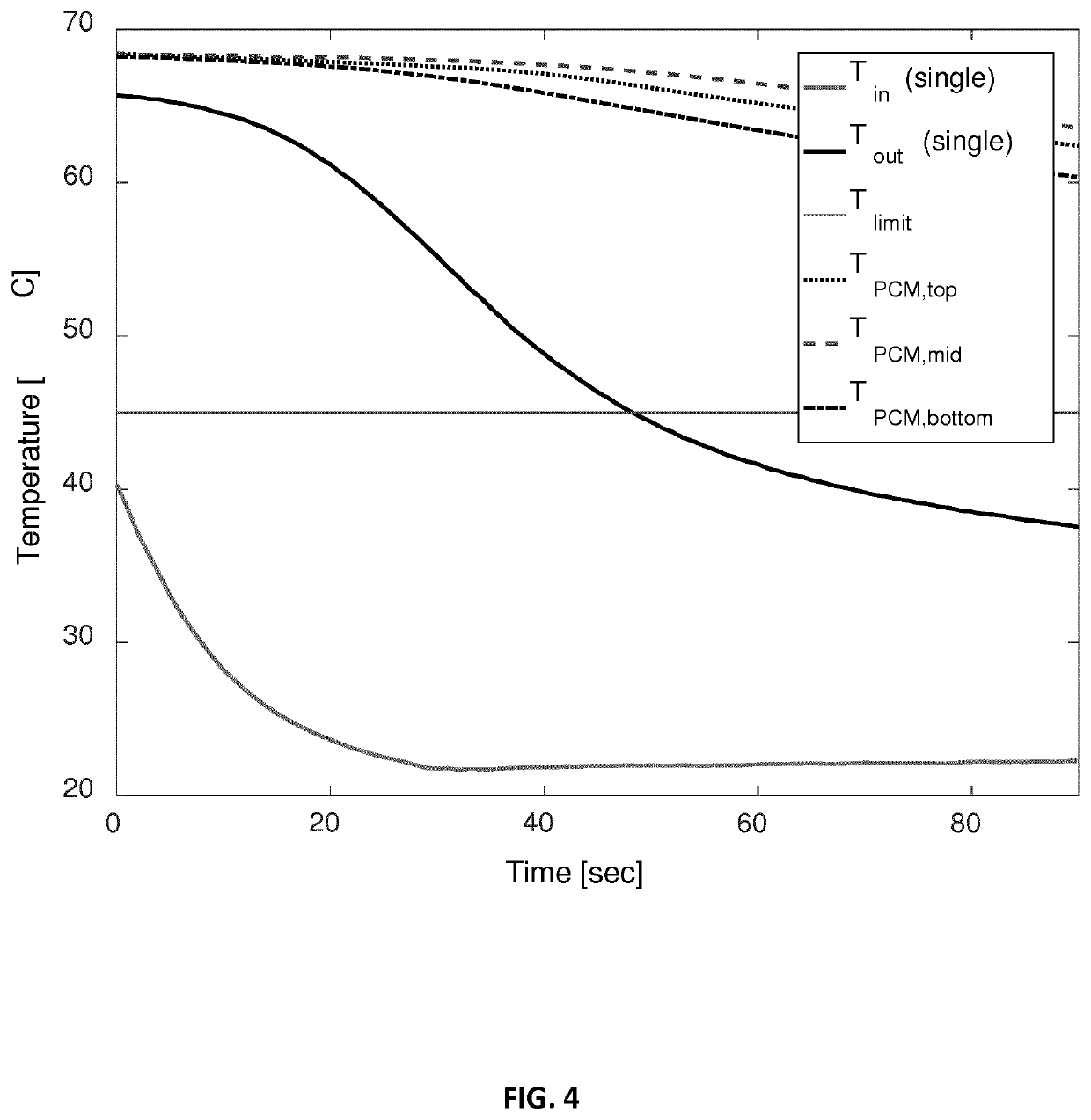Storage integrated heat exchanger
a heat exchanger and heat exchanger technology, applied in indirect heat exchangers, lighting and heating apparatuses, laminated elements, etc., can solve the problems of loss of user comfort, delay in heat delivery, and inoptimisation of heat exchangers, so as to improve the thermal contact
- Summary
- Abstract
- Description
- Claims
- Application Information
AI Technical Summary
Benefits of technology
Problems solved by technology
Method used
Image
Examples
case 1
[0122] store heat in 1 PCM with a melting temperature of 20° C. (between 60° C. and 10° C.). The waste heat stream can in theory be cooled till a temperature of 20° C. The cold stream can in the next cycle be heated (in theory) to a temperature of 20° C. There is however an imbalance between heat stored and heat that can be used. Theoretically, 20% of the waste heat stream can be reused to preheat the cold stream.
case 2
[0123] store heat in 1 PCM with a melting temperature of 50° C. (between 60° C. and 10° C.). The waste heat stream can in theory be cooled till a temperature of 50° C. The cold stream can be heated (in theory) in the next cycle till a temperature of 50° C. But due to the fact that the waste heat stream can only be cooled till a temperature 50° C., 80% of the waste heat is not stored. Theoretically, only 20% of the waste heat stream can be reused to preheat the cold stream.
case 3
[0124] store heat in 1 PCM with a melting temperature of 35° C. (between 60° C. and 10° C.). The waste heat stream can in theory be cooled till a temperature of 35° C. The cold stream can in the next cycle be heated (in theory) till a temperature of 35° C. Theoretically, 50% of the waste heat stream can be reused to preheat the cold stream.
PUM
 Login to View More
Login to View More Abstract
Description
Claims
Application Information
 Login to View More
Login to View More - R&D
- Intellectual Property
- Life Sciences
- Materials
- Tech Scout
- Unparalleled Data Quality
- Higher Quality Content
- 60% Fewer Hallucinations
Browse by: Latest US Patents, China's latest patents, Technical Efficacy Thesaurus, Application Domain, Technology Topic, Popular Technical Reports.
© 2025 PatSnap. All rights reserved.Legal|Privacy policy|Modern Slavery Act Transparency Statement|Sitemap|About US| Contact US: help@patsnap.com



